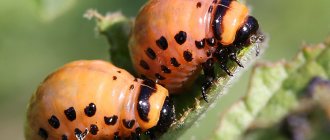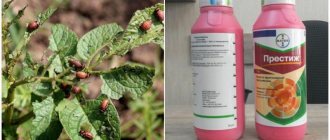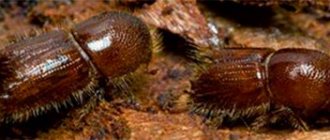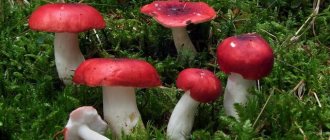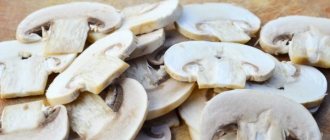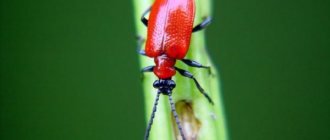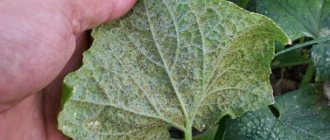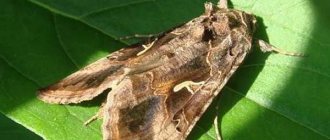The main pest of potatoes, tomatoes and other garden plants is the Colorado potato beetle, and its yellow larvae cause especially many problems. Gardeners and summer residents spend a lot of effort and money fighting this insatiable striped pest, but a truly effective means of combating it has not yet been invented.
In addition to the fact that the chemicals used for spraying can cause poisoning, not all of them are able to cope with the problem, although domestic and migratory birds, who happily eat the Colorado potato beetle and its larvae, sometimes do not help.
What insects eat the Colorado potato beetle?
If you want to prevent chemicals from ruining the quality of your potatoes, and your tomatoes not to become a source of food poisoning, it makes sense to think about how to attract feathered “gourmets” to your garden who prefer the Colorado potato beetle and its numerous larvae for lunch. Also, you should not rush to destroy some insects, which will not cause trouble to your harvest, but are guaranteed to help in the fight against the striped “predator”. Let's try to find out which fauna can help preserve the harvest.
ladybugs
If wolves are considered the orderlies of the forest, then the real orderlies of the gardens can be called the ladybug, which eats the Colorado potato beetle and other garden pests. They can help, however, only at the early stage of the formation of the insect, and their diet includes exclusively beetle eggs and its larvae, and they are capable of completely destroying the green part of the bush in a short time, and they even get to the root crop itself.
Lacewings
Among human helpers, oddly enough, is the lacewing, a foul-smelling winged insect that appears in vegetable gardens with the onset of warm March days. Outwardly, the insect resembles a small light green dragonfly, but do not delude yourself - this is a real predator, and, like the Colorado potato beetle itself, has a voracious disposition. Like the ladybug, the lacewing cannot cope with the adult Colorado potato, but it eats larvae and eggs with pleasure and in large quantities.
Sifrids
There is no need to rush to declare a fight against yet another winged insect, which is also a frequent visitor to gardens and vegetable gardens. We are talking about a garden fly - the sifrid, which is popularly called the “hoverfly”. It is not clear where this name came from, but it has been proven that, together with the above insects, sifrids eat the larvae of the Colorado potato beetle, thereby providing significant assistance to gardeners.
Natural enemies
The natural enemies of the Colorado potato beetle and larvae are insects. At the State Scientific Institution VNIIKH of the Russian Agricultural Academy named after. A.G. Lorch has developed various modifications of conveyor lines for the mass continuous cultivation of entomophagous insects, including protection against beetles. On the territory of the European part of Russia, scientists have classified more than 50 species as such.
At the first stage, when adult pests appear on potatoes, the following insects are active:
- ants;
- side-walking spiders;
- ground beetles;
- lacewings.
A significant influence on the second wave of pest generation emerging from egg clutches is exerted by:
- picromerus and podisus bugs;
- ladybugs;
- predatory mites;
- hover flies.
But it is impossible to breed beneficial insects on a personal scale to clear the beds from a massive invasion of Colorado. Therefore, the main enemies of the harmful Colorado potato beetle, which are capable of clearing plantings, turned out to be birds.
Eating adult insects is not easy. It has strong integument, a bright orange belly and paws warn that their owner is poisonous and not suitable for food. By consuming potato leaves, the pest accumulates a large amount of toxic substances in its own body.
But, nevertheless, it is the bird that is the enemy of the Colorado potato beetle. Its larvae are inactive, without protective cover. Pecking them is not difficult for those birds whose stomachs are adapted to digest such food.
What birds eat the Colorado potato beetle?
Despite the assistance provided in the form of the destruction of Colorado potato beetle larvae, you should not rely heavily on the help of insects, since they can simultaneously harm the future harvest. Meanwhile, even adult beetles can be dealt with, and some poultry are proving this every day. In addition, some of them are simply irreplaceable in the kitchen and are included in popular dishes. These are the birds that make sense to mention as part of the fight against the hated Colorado potato beetle.
It is important! If you do not want to harm your poultry, avoid chemical treatment of plants, especially before releasing the bird into the garden.
Guinea fowl
Regular poultry - chickens, ducks and geese - are increasingly being replaced by real “exotics”, where the guinea fowl, a “guest” from the American jungle, perfectly adapted to our conditions, deserves special attention. But in this case, we are not interested in the quality of meat and hypoallergenic eggs, but in the benefits of guinea fowl in destroying the Colorado potato beetle. Many people have a question: do guinea fowl eat the Colorado potato beetle? The answer is clear - they eat, and with great appetite. Like the chicken, the guinea fowl loves to dig into the ground, so it eats not only larvae and beetles conveniently located in the upper part of the plant, but also digs up individuals buried in the ground.
Pheasants and partridges
You may be interested in: Ticks in the Moscow region and Moscow in 2021: the most dangerous areas How to order turnkey roofing installation How to find out the current prices for soybeans
Among the domesticated wild bird species that are very popular today are pheasants, which reproduce well in the wild and produce tasty and healthy meat. The same applies to partridges, which can increasingly be seen not in the wild, but in captivity. Like pheasant, they are a source of environmentally friendly meat that is not susceptible to pathogenic microbes. At the same time, both representatives of birds happily eat larvae and adult Colorado potato beetles. Particularly effective will be walking pheasants around the estate, during which they eat hundreds of larvae of the Colorado potato beetle and the insatiable mole cricket, the fight against which often turns into “walking through torment.” It is better to do this in early to mid-summer.
Warning! Pheasants can certainly destroy large numbers of larvae and adults of Colorado potato beetles, but there is a high probability that they will completely trample your garden.
Turkeys
Unlike guinea fowl, pheasants and partridges, which are ideally cultivated at home and are not prone to diseases, the turkey is a capricious and sickly bird. Despite their complex nature, using turkeys to kill Colorado potato beetles and other pests is a common practice. It cannot be said that this bird is voracious, moreover, it often simply refuses to eat, but it eats garden insects with pleasure, which provides invaluable help.
Which bird can help?
The natural enemies of the Colorado potato beetle are many insects that are found in our country. Such insects include, for example, the lacewing. But using insects to combat this pest is not advisable, since they will still cause more harm, and it will not be possible to breed them.
But in addition to insects, several species of birds live in the CIS countries, which in this situation can act as assistants in the fight against the Colorado potato beetle. Which bird eats it? The list of such birds that live in our country includes:
All of the above birds are domestic and therefore can be used to destroy the Colorado potato beetle in gardens. In this situation, breeding guinea fowl is considered the most effective. Guinea fowl is a poultry that belongs to chickens, has tasty meat and is absolutely unpretentious in breeding. This “destroyer” of the Colorado common insect is grown in our country for the following reasons:
- dietary meat;
- Guinea fowl lay hypoallergenic eggs. Therefore, they are excellent for feeding small children;
- good tolerance to any weather conditions, which our country is so diverse in, including even the winter period;
- resistance of birds to many diseases. Unlike ordinary chickens, guinea fowl get sick much less often. The most common diseases are caused by spoiled and moldy food;
- can eat many harmful insects, including the Colorado potato beetle.
Related article: “Tanrek” preparation for potatoes against the Colorado potato beetle
Another advantage of these birds, along with turkeys, is that they do not rake the soil in search of food. This bird eats beetles and their larvae from the tops. Thanks to this, you don’t have to worry about planting cultivated plants.
For these reasons, the use of guinea fowl to combat insect pests is considered the most optimal. Keeping them in an open range will allow you to significantly reduce the population of harmful insects in your garden. Guinea fowl recognize pests by their specific striped coloring, which stands out against the background of green tops. For them, larvae are a real delicacy that fully satisfies their nutritional needs. After all, in fact, all insects contain proteins and pure protein.
Walking guinea fowl or other poultry to destroy the pest population should be done at the beginning of the larval development period (the first half of summer). Partridge and pheasant also eat the larvae of this pest. They, like guinea fowl, will also cope with the task perfectly. When used, it is possible to effectively combat a number of harmful insects. At the same time, gray partridges are more preferable, since they can be grown in any weather conditions. By the way, this is why they are widespread in the wild.
Turkeys, after guinea fowl, partridges and pheasants, occupy fourth place in the “rating” of beetle destroyers. But the disadvantages of breeding them include the fact that they are prone to various diseases and have a difficult temperament. Turkeys are prone to depression, which manifests itself in refusal to feed.
All of the above poultry can withstand temperature fluctuations well over a fairly wide range - from +30 to -30 degrees.
The use of birds allows you to effectively reduce the population of beetles and their reproduction in the future, and in addition to this, you can also obtain food products such as meat and eggs.
In addition to the above mentioned domestic species, wild birds can also reduce the population of these pests to a certain extent. These include:
As you can see, there are quite simple methods of controlling and containing the population of the Colorado potato beetle.
Who else eats the Colorado potato beetle?
In addition to pheasants, partridges and guinea fowl, wild birds provide assistance in eliminating garden pests, albeit insignificantly. Of course, you can’t count on this help too much, since the main problem is attracting game to the garden - as a rule, birds living in the wild are cautious, so you can’t count on their constant presence.
Meanwhile, “Colorados” are the desired prey of sparrows, starlings, hazel grouse and cuckoos; they also eat other birds, and yet the striped pest is not particularly interested in the chicken. Many plot owners, therefore, are thinking about how to attract birds to the garden and make sure that the benefits from them are greater than the harm.
Origin
The main pest of nightshade crops: potatoes, tomatoes, eggplants, peppers is the Colorado potato beetle.
People first started talking about this insect outside of Mexico in the 19th century. In the US state of Colorado, this pest caused significant damage to potato plantations.
The wider the potato culture spread around the world, the greater the number of pests that appeared in the fields. This is due to the beetle’s extraordinary ability to adapt to changes in environmental conditions.
The length of the insect is 7-16 mm. The white wings are lined with longitudinal black stripes. The abdomen, legs and head are brown-orange in color.
Lays up to 160 eggs. They are bright orange, oblong, 0.8-1.5 mm long. The larvae are inactive, yellow or orange-red, with rows of black dots on the sides and a black head.
Nature has endowed the Colorado potato beetle with extraordinary immunity, which helps it adapt in one or two generations to get used to climate change and not react to toxic agents.
Adult insects overwinter in the soil in the fields where they fed in the summer. The depth of occurrence is 15-20 cm. They emerge from the ground when the soil around them warms up to 14-15°C. At this time, the crops on which the beetles fed are already covered with green leaves. Therefore, pests immediately lay eggs on the back of the leaf.
Damage to nightshade plantations is caused by adults and larvae, completely eating the greenery, leaving only veins on the plants.
After 3-17 days, depending on the temperature, larvae appear. They feed on potato leaves and grow rapidly. They feed for 15-22 days, then go into the soil and pupate.
After 7-8 days, adult insects emerge from the pupae. Depending on the climate, from 1 to 3 generations of offspring can develop.
It is difficult to destroy a pest in your own garden. Adult beetles travel tens of kilometers in search of food. And it’s not difficult for them to move from the neighboring garden to the vacated bed.
During the times of collective farms, potato fields and private gardens were treated jointly. Now it is impossible to organize such an event in one day. And the harm from pesticides is no less than from the Colorado potato beetle.
The massive distribution of insects and low susceptibility to chemical poisons prompted scientists to look for its enemies in nature.
How to train your chickens to eat the Colorado potato beetle
Despite the fact that the hen teaches her chickens everything herself, summer residents note that she does not pay enough attention to the Colorado pest, which chickens, as a rule, are in no hurry to eat. In this case, it is definitely impossible to do without human intervention. To teach poultry to collect larvae and adults of the Colorado potato beetle from green tops, it is necessary to include beetle larvae in the diet of chickens from 3-4 months of age, accustoming them to their taste. After this, the chickens themselves will walk around the garden, collecting beetles, larvae and eggs from the tops.
Is it possible to use domestic chickens to kill pests?
It is necessary to accustom chickens to eat insects from an early age, when chickens reach 3-4 months. During this period, the bird’s favorite food should be mixed with Colorado potato beetle larvae. Thus, the chickens will have not only a visual, but also a taste association of the pest with the food. Subsequently, the prepared chickens will independently move around the beds, pecking parasites from the tops.
About insect exterminators
In addition to birds, insects can also get rid of potato pests. Colorado beetles feed on ladybugs, lacewings, syrphids, or as they are also called hoverflies.
Ladybugs act as a destroyer of leaf beetle larvae and egg laying. Due to their small size, lacewings and hoverflies are also unable to influence adult individuals. But despite this, they can significantly reduce the number of harmful insects during the formation of larvae.
However, it should be understood that it will not be possible to completely get rid of Colorado potato beetles by attracting birds and insects to potato fields, but it is quite possible to control their numbers within reasonable limits. It should also be taken into account that “chemical artillery” is not used to fight the enemy, which is also an important advantage of this method of fighting. And besides, natural enemies will cope with the pest much faster than doing it manually.
Feathered helpers
So, let's figure out who eats the Colorado potato beetle? In addition to birds, this insect is destroyed by lacewings. But it is not recommended to use them in the fight against Colorado.
Starlings
These insects cause more harm to the crop than benefit. In our country there are several species of domestic and wild birds that can be used as a tool to combat insect pests.
Read on the topic: How to get rid of the Colorado potato beetle using mustard and vinegar
Help from wild birds
Cuckoo
What birds eat Colorado potato beetles?
This insect is part of the menu:
- Cuckoos;
- Ryabchikov;
- Vorobiev;
- Crow;
- Skvortsov.
Help for domestic birds
Rooster
Read on the topic: Fragrant tobacco against the Colorado potato beetle
Colorado is included in the diet:
- Partridge.
- Chicken
- Turkeys.
- Pheasants.
- Guinea fowl.
Help Guinea chickens
Guinea fowl
The idea of using domestic birds in the fight against insect pests first came to the minds of South American farmers. To do this, they began to “set” a special breed of chickens on the beetle. Guinea chickens, also known as guinea fowl, are characterized by rapid acclimatization in a wide variety of conditions. These are hardy and unpretentious birds.
You may be interested in this product: Insecticide Executioner - poison for the Colorado potato beetle
In the domestic space, the following breeds of guinea fowl are most widespread:
- mottled gray;
- cream;
- Zagorsk white-breasted;
- Volga white.
Do guinea fowl eat Colorado potato beetles? According to gardeners, the benefits of this small bird with thick dark plumage are not exaggerated.
In order for the pest to stop reproducing, 2-3 “raids” of feathered special forces are enough. The bird does not eat the insects themselves, but the egg-laying eggs.
A total of 3-4 individuals is enough. They are able to rid the area of the pest in a few days.
Colorado potato beetle larva and its weaknesses
Despite the fact that today there are dozens or even hundreds of different ways to get rid of the above insects, folk remedies are still quite popular.
They are also characterized by their diversity. The most important thing is that each person has the opportunity to choose the most optimal way to combat the Colorado potato beetle for a particular case. A very effective method is to plant sprouted tubers. This must be done in early spring immediately after the bud ripens.
You can also place bait on its surface in the form of cut potatoes, which will definitely attract the attention of pests. Once the beetles gather on these baits, they can be destroyed quite simply
First of all, this concerns larvae, because without using traps it is quite difficult to determine how many of them are in the garden at one time or another.
After the future potato crop has sprouted for the first time, it must be covered with soil. This method of combating the Colorado potato beetle is also quite effective. It is best to use it around May-June. Manual collection of larvae will help if the expected harvest is far from the most impressive.
Biological control method
Practice shows that due to the correct use of this method, the larva of the Colorado potato beetle is not capable of further development and dies before the moment when it turns into a full-fledged adult. The main advantage of the biological method is that it is absolutely incapable of disturbing the ecological balance in plants and soil. In parallel with the destruction of pests, the environment is not contaminated with toxic substances, which is a very important factor for most citizens.
One of the most common biological methods of controlling Colorado potato beetles is the activation of beneficial entomofauna. In this case, you can use special preparations that were produced on the basis of very active strains of fungi and bacteria. The subsequent use of a variety of preventive methods, which absolutely do not include chemicals, allows you to protect your own vegetable crops from parasites for a long time.
Reasons for the survivability of the Colorado potato beetle
Many have noticed that the presented insect, as well as its larvae in our area, are able to tolerate the effects of a wide variety of drugs and continue to harm vegetables. In fact, this is due to a number of objective factors. Each larva of the Colorado potato beetle gets a unique opportunity to develop calmly, because it has virtually no natural enemies. The same situation is almost impossible to imagine, for example, overseas, where these insects are constantly forced to fight for their existence.
Among other things, the Colorado potato beetle has the unique ability to enter a fairly long diapause, which can last up to three years. Thanks to this opinion, this parasite survives the most difficult years of its existence without any problems, when there is a lack of food variety. After diapause is completed, the pest is still able to produce one hundred percent healthy offspring. In the winter season, it is completely useless to fight this insect. Due to the fact that Colorado potato beetles lie quite deep in the soil during this period, even strong chemicals are not capable of causing significant harm to them. If there are no beetles in the garden at a certain moment, then you should not relax too seriously. These parasites are capable of flying over distances of tens of kilometers, which is why they can settle in a new area at any time.
Who eats the pest
There is no need to rely on birds that live in the wild with a tropical climate. Therefore, scientists turned their attention to domestic animals.
The pest's enemies turned out to be domestic birds:
- chickens;
- partridges;
- guinea fowl;
- turkeys;
- pheasants.
Important! In order for the bird to get used to using the Colorado potato beetle as food, it is mixed in crushed form into the food of the chicks.
Chicken
It does not feed on adult pests or larvae on its own. This is due to the fact that the natural habitat of domestic hens is Asia, not America. This insect does not belong to the usual food. Therefore, chickens have to be trained.
Young birds at 3-4 months are taught to eat these insects by mixing larvae into the food. After some time, the birds get used to seeing the pest as food. Once trained chickens are released into the garden beds, they find food for themselves, clearing the plantings of pests and other insects along the way.
Partridges
Poultry lovers keep gray partridges on their farm. These unpretentious creatures thrive in cages on good food. They can also feast on pest larvae. But releasing wild birds into the garden to fight insects is hardly advisable. They will peck the Colorados, but it is unlikely that they will be able to drive them back into the enclosures.
Turkeys and guinea fowl
The Colorado potato beetle is afraid of poultry, which is found in peasant farmsteads in Mexico. Turkeys and guinea fowl are ardent opponents of the pest. Released into vegetable gardens that have not been treated with chemicals, the birds happily peck at the soft larvae. Adults are not abandoned either.
However, they also need to be “trained” to destroy the pest. From three weeks of age, chickens are given grated potatoes and green tops in their complementary food. They gradually become accustomed to the smell of the vegetable and develop the habit of looking for food with a similar aroma. After 2 weeks, crushed Colorado potato beetles are thrown into the mash.
Guinea fowl or Guinea chickens are rare guests in the poultry yard in Russia. Despite their unpretentiousness, tasty meat and eggs, they still remain exotic in private backyards. This bird itself pecks soft-bodied larvae and adults without raking the soil in potato plantings. The guinea fowl can even eat clutches of eggs from the tops without harming the green leaves.
Turkeys require more careful attention. The Indian rooster has a complex temperament, he needs a special approach and good food, he often gets sick and may refuse to feed. But the bird’s stomach is adapted to eating the Colorado potato beetle and larvae. Turkey poults are taught from childhood to collect them as food.
Pheasant
Who eats the Colorado potato beetle among other poultry? Pheasants cope well with this task. For these purposes, they are walked around the plot in the first half of summer. It was at this time that a massive increase in the parasite population was observed.
Breeding pheasants makes it possible to cope with the extermination of a number of other harmful insects, in particular, the larvae of the cockchafer and the mole cricket. At the same time, these birds are quite picky about their living conditions and do not always survive in harsh domestic winters.


